As part of the celebration of the 70th anniversary of Topps baseball cards, we've asked fans (as well as our staff) to submit their all-time favorite baseball cards, and we've broken them down by team. We'll be revealing submissions regularly throughout the season, ranging from the famous to the weird, and everything in between.

Bud Harrelson, 1971 Topps
Defensive action shots usually make for great cards, and the one Topps went with for Harrelson’s ‘71 card is a classic.
The card, which was submitted by Bill Cherubino, shows Harrelson slapping the tag on a sliding runner at second base while the umpire prepares to make a call. As an added bonus, Nolan Ryan is in the frame, pumping his fist.
The folks over at Mets blog Metsmerized Online did some sleuthing and figured out that the play was from a game against the Astros at Shea Stadium on May 30, 1970, and the runner was Jim Wynn, AKA the “Toy Cannon.” -- Thomas Harrigan
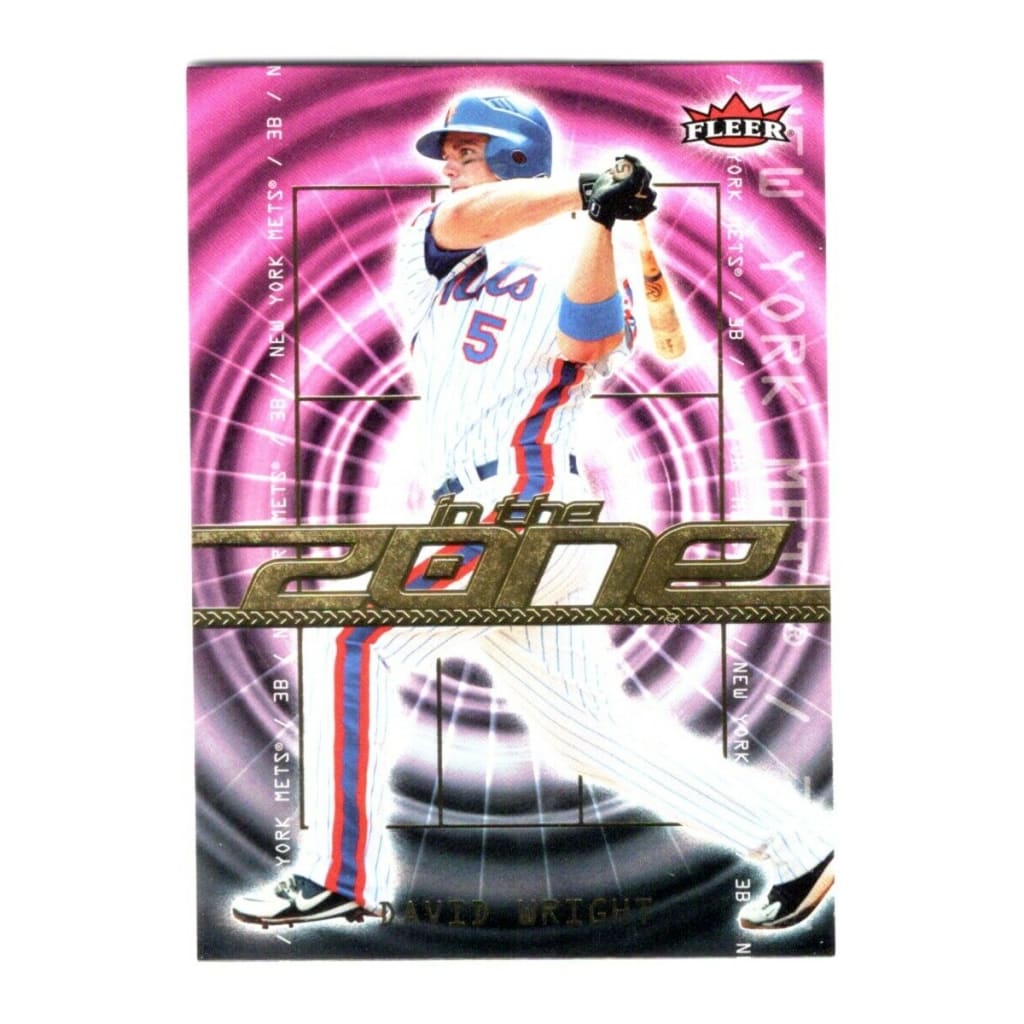
David Wright, 2007 Fleer In the Zone
This card shows the force of David Wright's swing in its prime -- he had just led the 2006 Mets to the National League Championship Series in his first All-Star season, and he was about to join the 30-30 club in 2007, a year in which he also won the NL Gold Glove and Silver Slugger Awards at third base and finished fourth in MVP voting.
The Mets' captain looks the part in this "In the Zone" card from Fleer, wearing New York's 1980s throwback uniform with the blue and orange "racing stripes," bat wrapping around his shoulder.
Wright at his peak was one of the best third basemen in the game. Here he is at his peak.
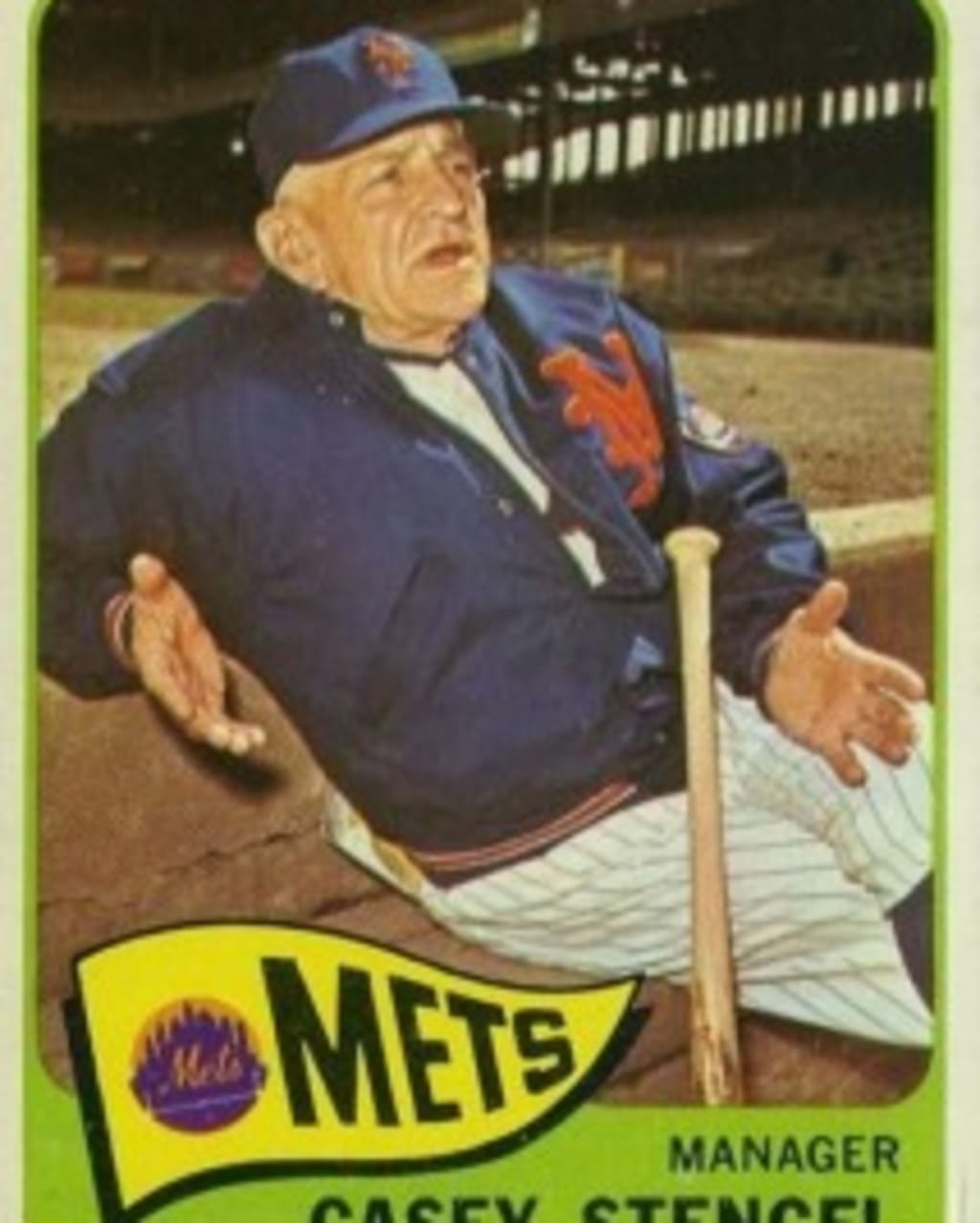
Casey Stengel, 1965 Topps
There’s something particularly cool about manager cards. In this case, we have the first manager of the Mets, who was one of the most colorful characters in baseball history. He even had his own language: “Stengelese.”
After beginning his managerial career with the Brooklyn Dodgers at the age of 43 in 1934, Casey Stengel went on to manage the Boston Braves and the Yankees before taking the helm in Queens. He won seven World Series titles with the Yanks in 12 seasons in the Bronx.
The Mets job was quite different, though -- the expansion club predictably struggled early on, and during Stengel’s tenure it went 175-404 over four seasons. Still, if you’re going to have an expansion team, might as well have one with some great characters on it, including the manager.
“The year 1965 was the first year I started following baseball,” wrote Tony G. of Edison, N.J., in his survey response. “It was also Casey’s final year in uniform. A little forensics tells me that this was taken at the Polo Grounds in 1963. (The 1964 card is a different angle from the same shoot.) Anyway, I turned 6 just after Casey broke his hip and had to retire. He was so ingrained in New York baseball that I really thought that the game began after they played the 'Star Stengel Banner.’”
You gotta love that -- the “Star Stengel Banner.” -- Manny Randhawa

Iconic Mets card: Keith Hernandez, 1986 Topps
The most famous mustache in Mets history is captured perfectly on Keith Hernandez's 1986 Topps card.
It's a great photo of the star first baseman, too, with Hernandez wearing vintage Mets blue and orange, mitt on hand as he surveys the field, doubtless about to make one of his defensive gems.
Hernandez was a Gold Glove Award winner for the Mets in '86, one of 11 such awards he received in his career. He was also an All-Star and the fourth-place finisher in MVP voting. Hernandez batted .310 with 13 homers and 83 RBIs that season.
But most importantly, he was a leader of the Mets team that won one of the greatest World Series ever played, beating the Red Sox in a seven-game classic.

Cleon Jones, 1974 Topps
In Tom Backner’s eyes, Cleon Jones’ ‘74 Topps card is “just perfect,” depicting a great action shot of the Mets outfielder taking a swing at Shea Stadium. Growing up in Queens, Backner was a big Mets fan, and he identified with Jones, a Black player.
“I was keenly aware of the racism that existed in society as well as MLB,” Backner wrote. “I noticed that on all teams, but especially the Mets in the early to mid 1970s, to make a Major League roster as an African-American you had to be one of the most talented players on the team. Most Black baseball players hit either leadoff, third or clean up on their teams. There were very few Black pitchers, shortstops, catchers or bench players. There were zero Black managers or general managers. Therefore, I tended to root for the players I believed had two strikes on them in life, to borrow a baseball phrase.”
Backner was only 2 years old when Jones and the ‘69 Mets won the World Series, but he learned about the team from his father and soon became a huge baseball fan. By ‘74, Backner says he “was just getting completely hooked on MLB, the Mets and Topps baseball cards,” so he holds a special affinity for Jones' card from that year's Topps set. -- Thomas Harrigan
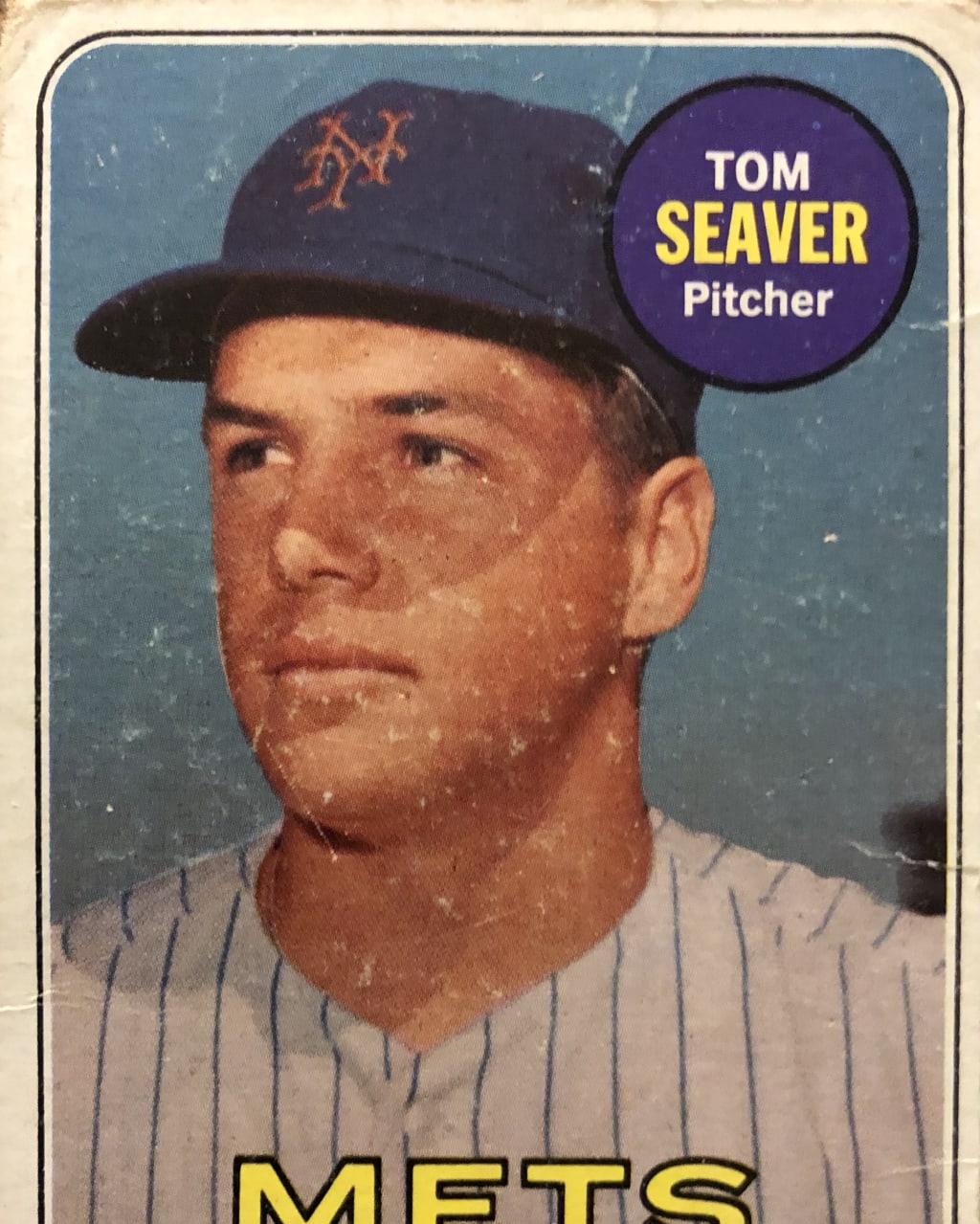
Tom Seaver, 1969 Topps
If there’s any card that says “Tom Terrific,” it’s this one.
Tom Seaver, the great Hall of Fame right-hander, passed away last year, leaving a tremendous legacy both on and off the field. Over a career that spanned 20 years, he won three National League Cy Young Awards, was a 12-time All-Star, won 311 games and struck out 3,640 batters. He later became a broadcaster with NBC and throughout it all was an inspiration to countless individuals, both inside and outside baseball.
This card captures a 24-year-old Seaver in the year he won his first Cy Young Award. He is looking off into the distance and the simple elegance of the photo and the design of this Topps set complement the type of pitcher and man Seaver was.
Rich N. of Burlington, Vt., submitted this card and said there’s a reason why it’s so worn.
“This card really started my life-long love of baseball,” Rich wrote. “I rooted like crazy for Tom Seaver and the Mets all summer and through October. You can see the card is well-worn. That's because I took it out and held on to it all through the playoffs and World Series. And Tom Seaver became my all-time favorite baseball player -- I never stopped following and rooting for him throughout his career. I have cards that are worth more money than this one, but I love this card the most.”
-- Manny Randhawa
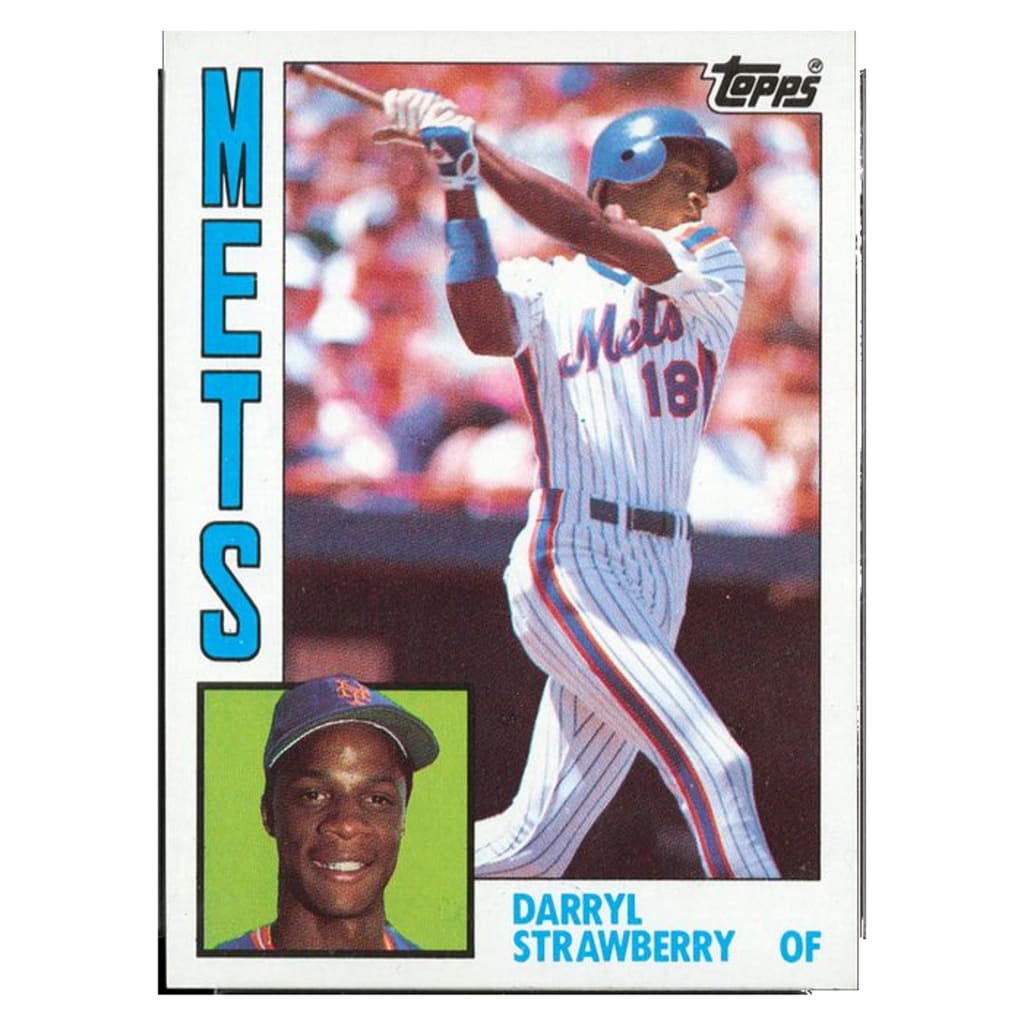
Darryl Strawberry, 1984 Topps
You have to love the look of this card. Darryl Strawberry is just finishing his sweet swing, wearing the Mets' classic white pinstriped uniforms with the bold blues and oranges standing out on the Mets logo, No. 18 uniform number and stripes down the sides of the uni.
Topps' '84 cards also featured great design work. On Strawberry's, the photo of his swing is framed by "Mets" printed vertically down the left side of the card, the Topps logo inset into the top-right corner, a young Straw's face inlaid on the bottom-left and "Darryl Strawberry, OF" printed across the bottom-right.
The card also preserves a great time in Mets history. Strawberry had just won the 1983 NL Rookie of the Year Award, and he would soon lead the Mets to the '86 World Series championship.
That's what inspired one Mets fan to submit this card: "It displayed that awesome Strawman swing follow-through, and for me symbolized that greatest of Mets teams from growing up as a kid."
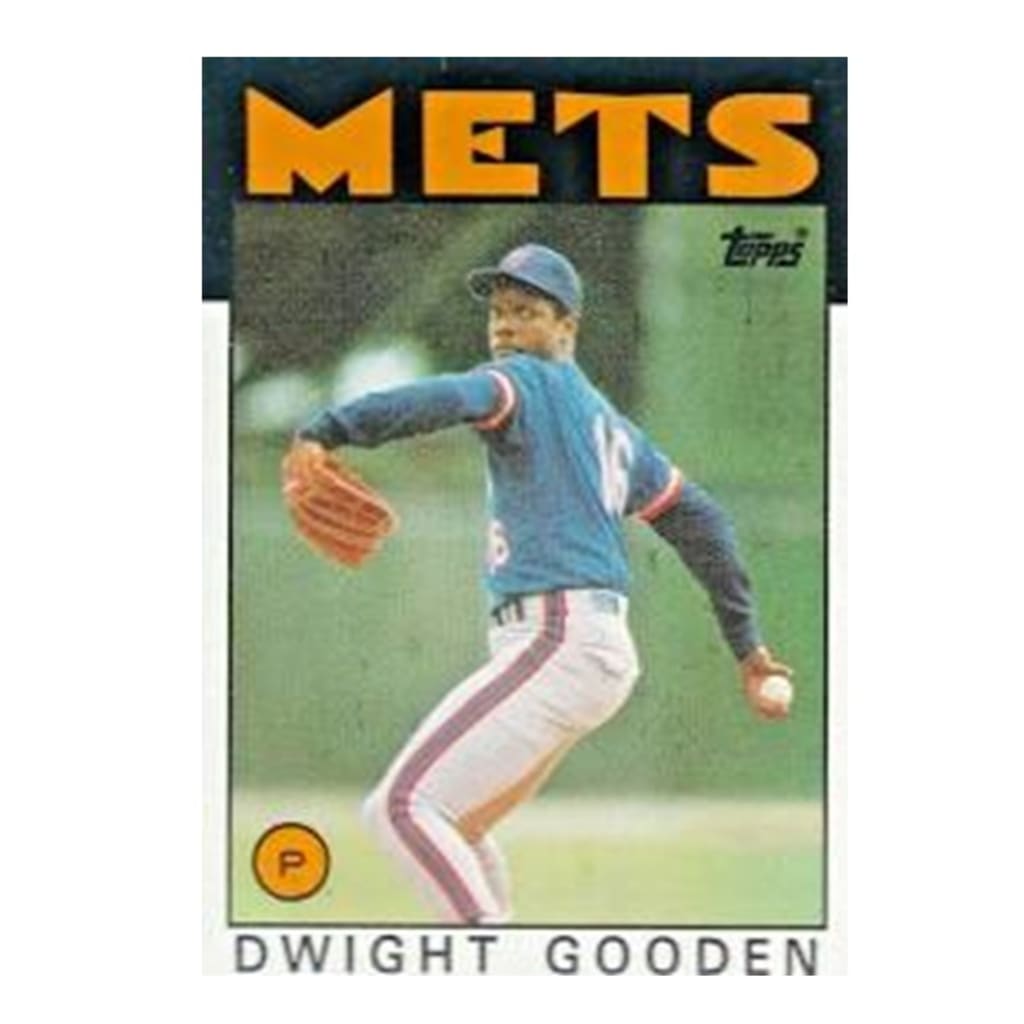
Dwight Gooden, 1986 Topps
This one was submitted by Dave Mace from New York, who wrote:
"I’m the same age as Dwight Gooden, and I watched every game he pitched in 1985. He was so dominant, and I loved watching the K's go up at Shea with each strikeout. The crowd size at the stadium was larger by thousands when Doc pitched because it was almost always a masterful performance."
There are few players more associated with a specific team and era than Doc Gooden and the Mets of the mid-80s.
Gooden came up in 1984 and decimated anybody who dared step in the box against him. He went 17-9 with 276 strikeouts and a 2.60 ERA. His curveball became known as "Lord Charles." He had his own Shea Stadium cheering section. He struck out the side in the All-Star Game and won the NL Rookie of the Year.
He somehow got even better in 1985 -- putting up a record of 24-4, compiling an unbelievably miniscule 1.53 ERA while striking out 268 batters. He won the NL Cy Young. He was 20 and on top of the world.
His 1986 Topps baseball card had all these feats and stats packed into it. He would have some other great years -- including an excellent '86 season -- but nothing like the wunderkind brilliance of '84 and '85. Even though his '85 rookie is maybe the most famous and valuable, this card stood for the pinnacle of his career; he has a confident, unfazed look as he glares into the trembling hitter 60 feet, 6 inches away. He even won his first World Series the year of the card.
Mace was heartbroken when Gooden signed with the crosstown Yankees in 1996 -- a team he vowed to never watch. But during one day that year, he decided to go to a game to see his favorite player pitch.
"I would never go watch the team in the Bronx play but a friend convinced me to go since Doc was starting," Mace wrote. "My only time in Yankee Stadium was in May ‘96 and Dr. K threw a no-hitter! I keep his card in the top drawer of my desk just in case I ever need a walk down memory lane with one of the great pitchers."
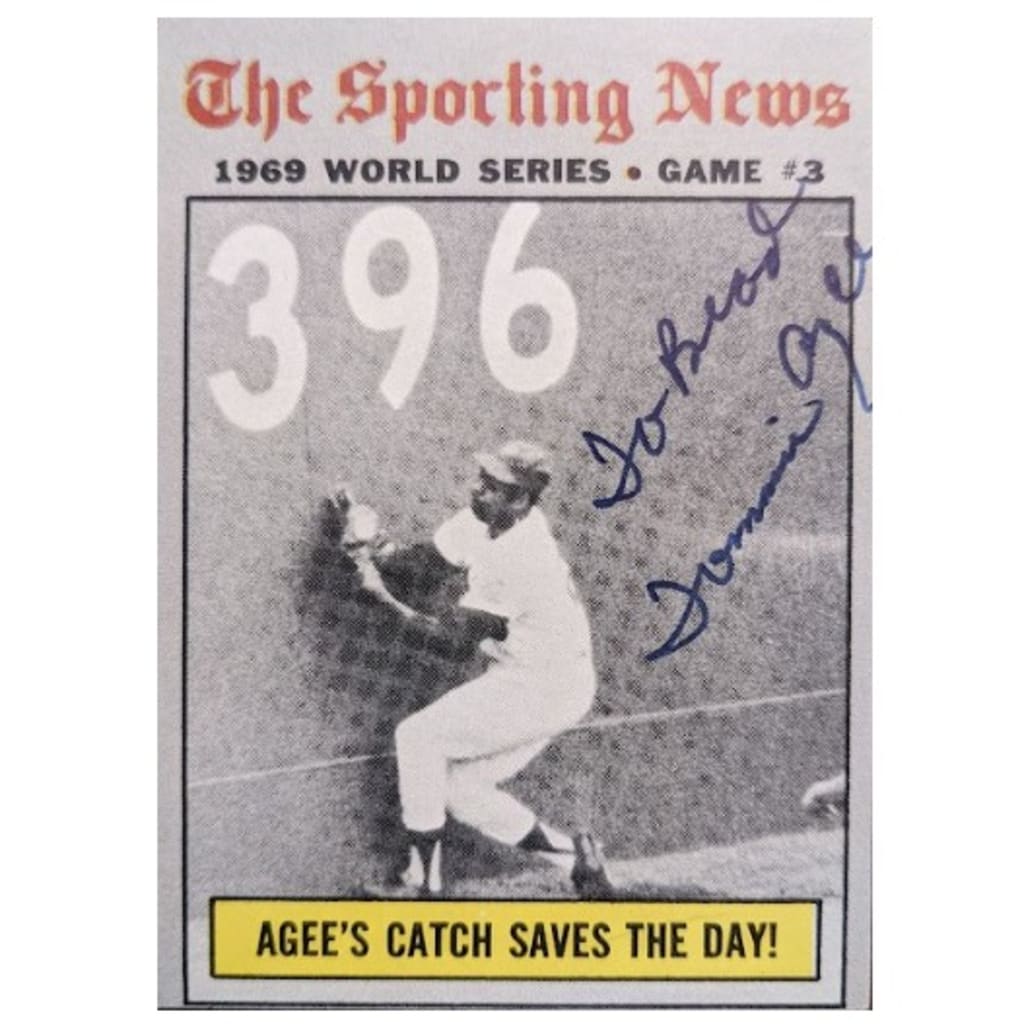
Tommie Agee, 1970 Topps
Agee’s fingerprints were all over the Mets’ pivotal win in Game 3 of the 1969 World Series against the Orioles. The center fielder not only crushed a leadoff homer in the bottom of the first, but also made two game-saving catches.
In the top of the fourth with two on, two out and the Mets leading, 3-0, Baltimore’s Elrod Hendricks hit a fly ball to deep left-center field. Agee was playing Hendricks, a left-handed batter, to pull, but he still was able to run down the ball on the warning track.
Three innings later, the Orioles loaded the bases on three Gary Gentry walks and brought the tying run to the plate with two outs. Paul Blair laced a fly ball to right-center field off reliever Nolan Ryan, but Agee once again was able to corral it, making a diving catch to end the inning.
Agee’s first catch was immortalized by Topps in the company’s 1970 set. Titled “Agee’s Catch Saves The Day!” the card shows the outfielder as he slams into the wall just below the 396-feet sign in left-center field at Shea Stadium.
It was submitted by Brad Greene, who wrote:
“I am a big fan of the World Series cards in each set. There is something about the action shots and box scores for each game captured in card format that perfectly memorializes the pinnacle of the sport. Tommie Agee became my favorite player from my first trip to Shea Stadium. I'm not exactly sure why; maybe because the first Mets hit I ever saw was an Agee triple. So it was natural that the card celebrating Agee's catches in Game 3 of the '69 World Series became my favorite. The only thing I thought would make the card better was to someday have Agee sign it. I had the opportunity to meet him and have him sign the card not too long before his passing. The card has become a cherished part of my collection ever since.”
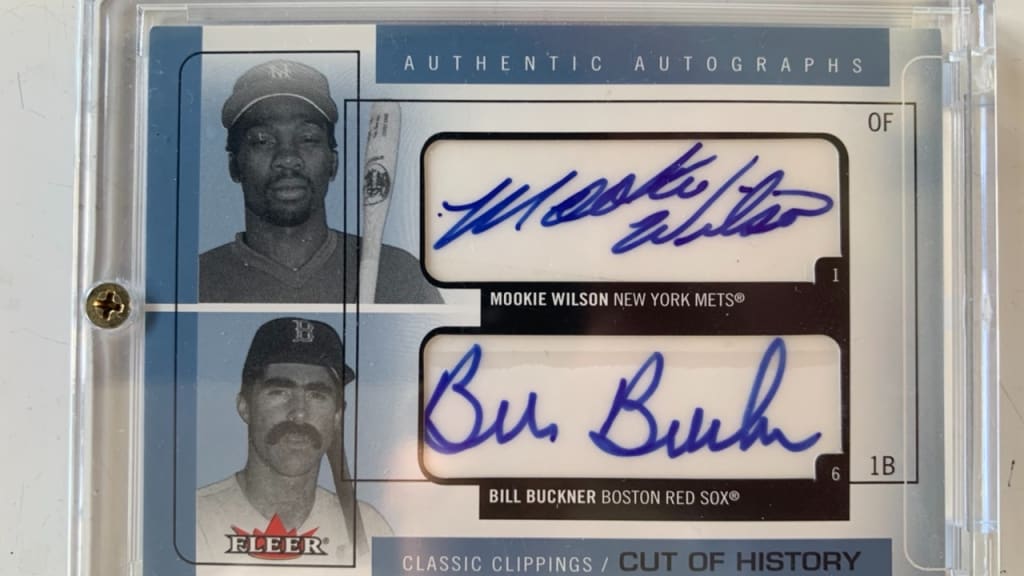
Mookie Wilson and Bill Buckner, 2005 Fleer 'Cut of History'
It's the most famous play in Mets history. It's also the most infamous play in Red Sox history. And it's one of the most memorable plays in World Series history.
When Mookie Wilson's slow ground ball went through Boston first baseman Bill Buckner's legs in the 10th inning of Game 6 of the 1986 World Series, the Mets completed a miraculous comeback to force Game 7, which they would win two nights later.
The play is commemorated here with signatures from both players, who later became good friends. It would be another 18 years before the Red Sox would finally end their World Series drought that began in 1918. And the Mets haven't won it all since, despite appearing in two Fall Classics (2000, '15).
But no matter what happens, this play will be embedded in baseball lore forever. Thanks to Mike of River Edge, N.J., for submitting this card in our survey.
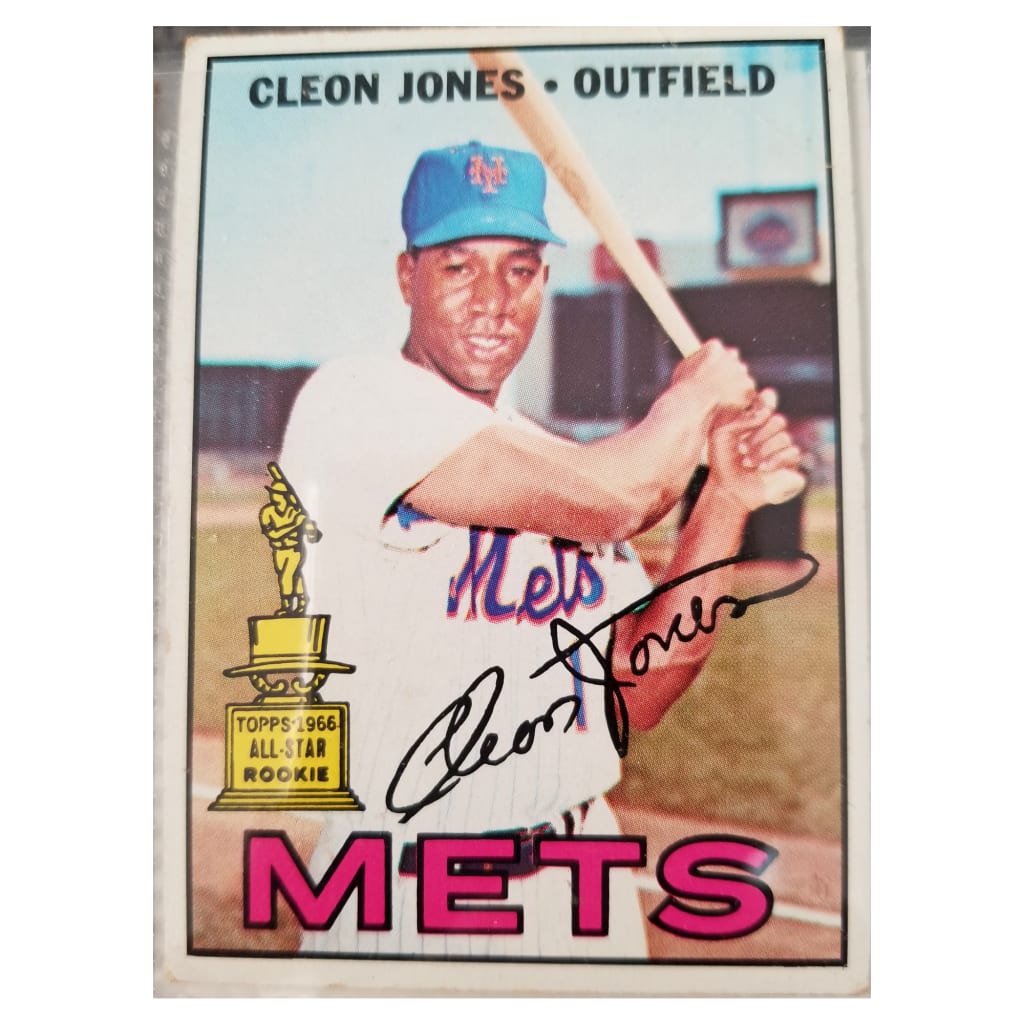
Cleon Jones, 1967 Topps
Things were just about to turn around for the Mets in 1967. Two years later, they'd become the Miracle Mets and win the 1969 World Series. Jones would be a key part of that championship team as an All-Star in '69.
This card marks the beginning of Mets fandom for Andrew Rosenthal, who submitted it: "The year 1967 was when I declared myself a Mets fan and my mom gave me my first baseball cards. And Cleon Jones caught the last out of the 1969 World Series."
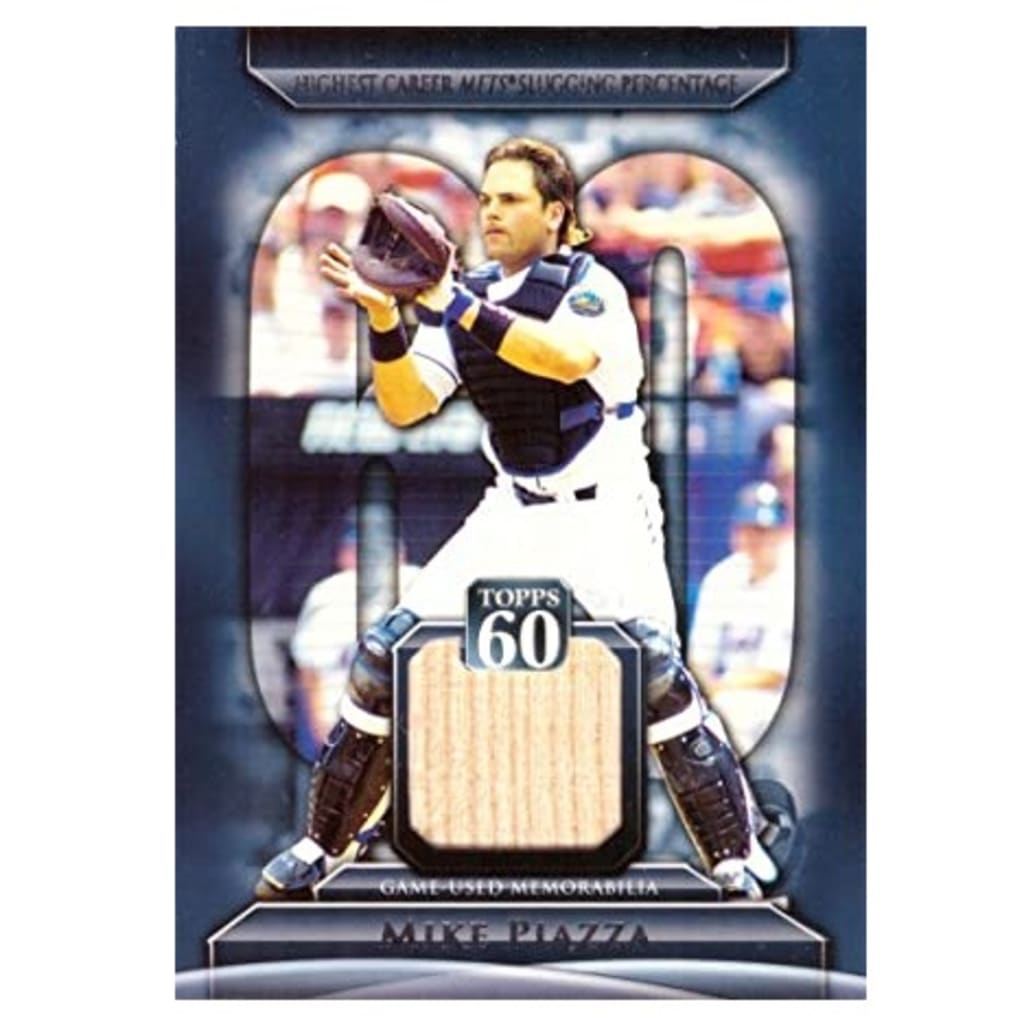
Mike Piazza, 2011 Topps
Topps celebrated 60 years in 2011, and this cool Piazza memorabilia card was part of the “Relics” insert series.
This card includes a piece of wood from a game-used Piazza bat and features a great picture of the Hall of Fame catcher preparing to receive a throw on a play at the plate. -- Thomas Harrigan
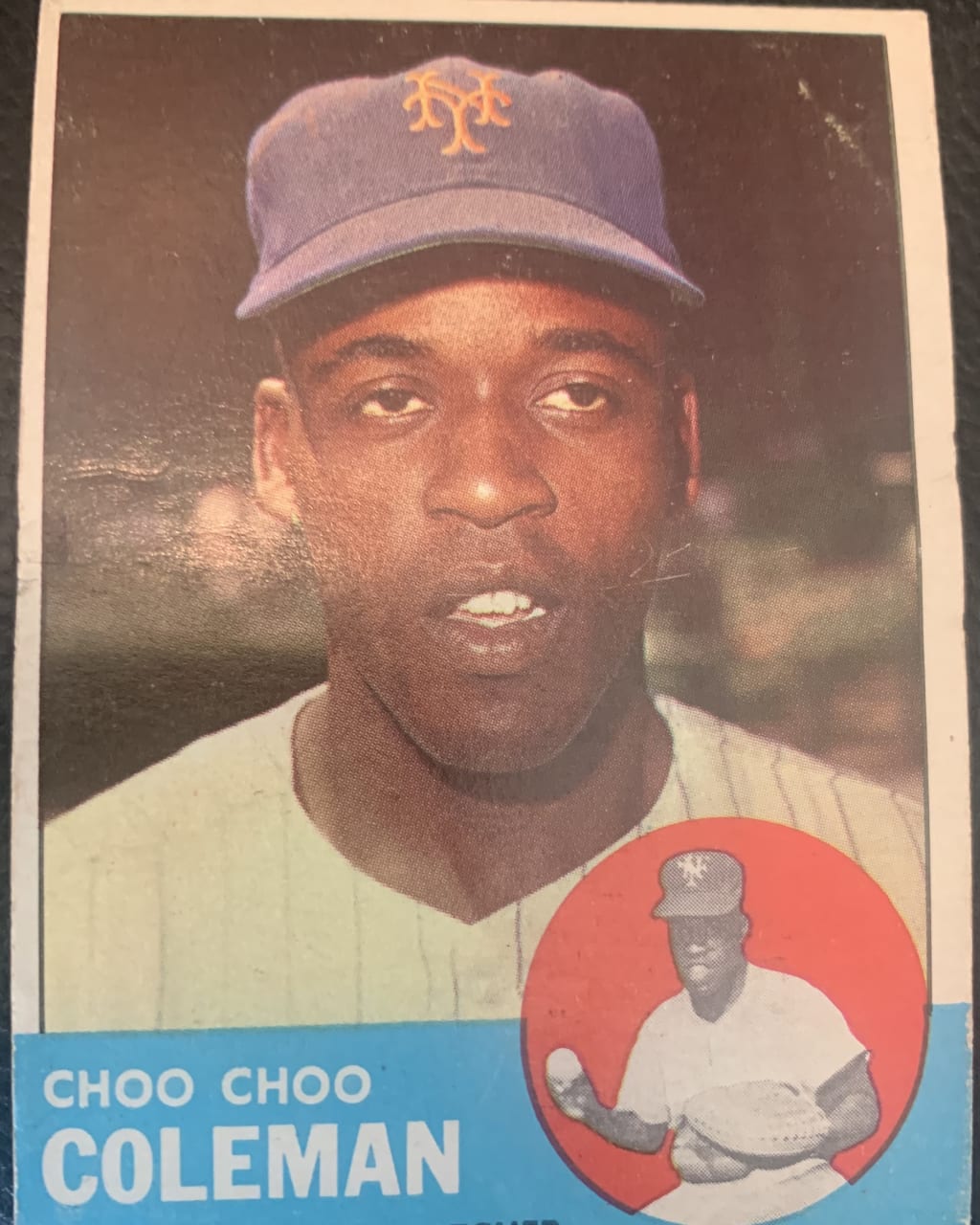
Choo-Choo Coleman, 1963 Topps
Here’s a reminder of why baseball cards are so fun. Coleman was a backup catcher for most of his career, but his 1963 Topps card is a collector’s favorite just because of his nickname. He got the nickname as a child, saying that the local kids dubbed him “Choo-Choo” because of his speed.
Choo-Choo, whose real name is Clarence, was one of the original Mets in 1962, taken in the 1961 Expansion Draft from the Phillies. He had the finest season of his career that year, as he set personal bests in almost every offensive category. Six of his nine career homers came that season, as did more than half his RBIs. And he did it all in just 55 games! -- Nick Aguilera
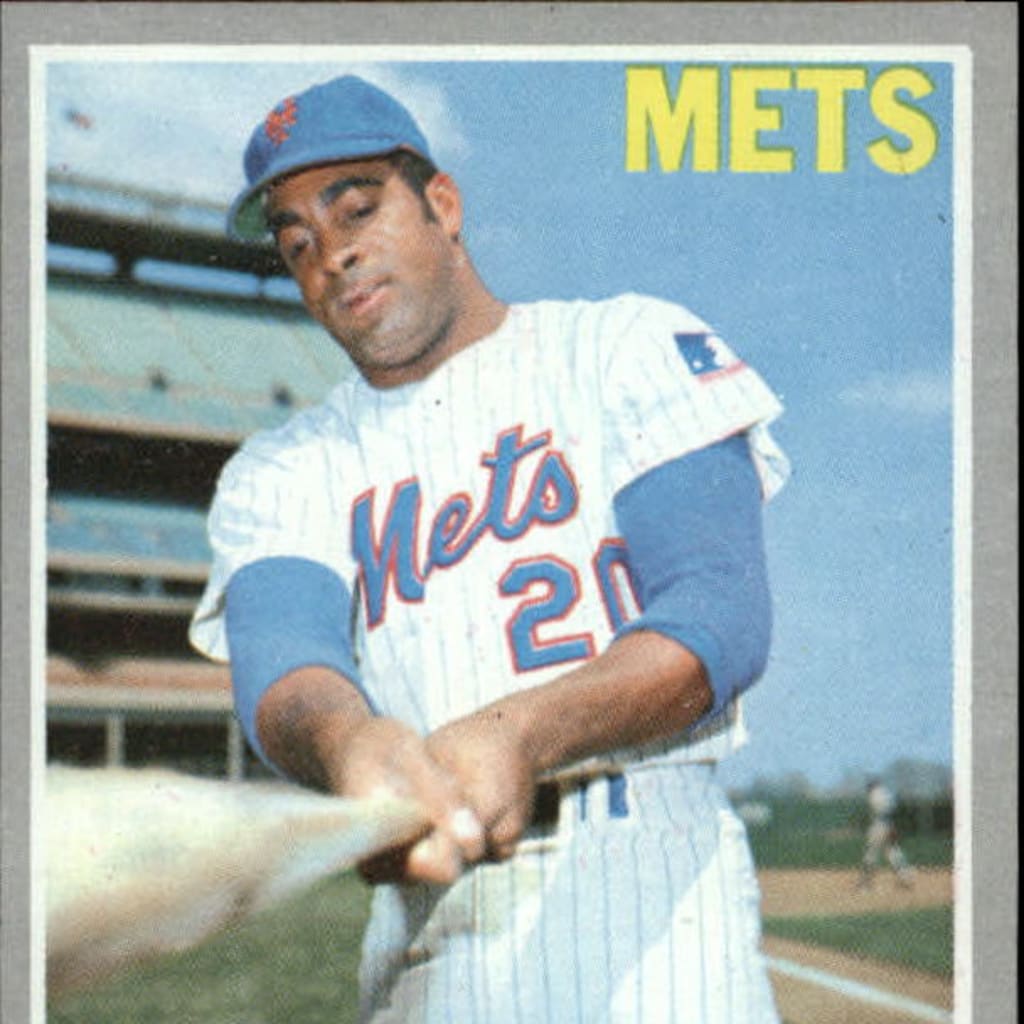
Tommie Agee, 1970 Topps
For Mets fans, there's something uniquely special about players from the "Miracle Mets" team of 1969, which bucked all the odds and won the World Series after the franchise had never finished higher than 9th place (out of 10 teams) in the National League. One of the key players on that club was outfielder Tommie Agee, whose 1970 Topps card was submitted in our survey by Jim C. of Long Island.
"The first cards I can remember collecting were the 1970 Topps," Jim wrote. "Growing up on Long Island, I would bike to the candy store with my friends and buy a few wax packs with the little money I had. We all wanted either Yankees or Mets players....I loved both teams. Bobby Murcer was already my favorite Yankee at the time, but the town was still abuzz with the Mets' World Series victory. I loved Agee, Cleon Jones and Don Clendenon. They were my favorite Mets."
Jim is certainly far from alone in loving that trio from the '69 Mets, who shocked the baseball world by bringing a title to Queens. -- Manny Randhawa
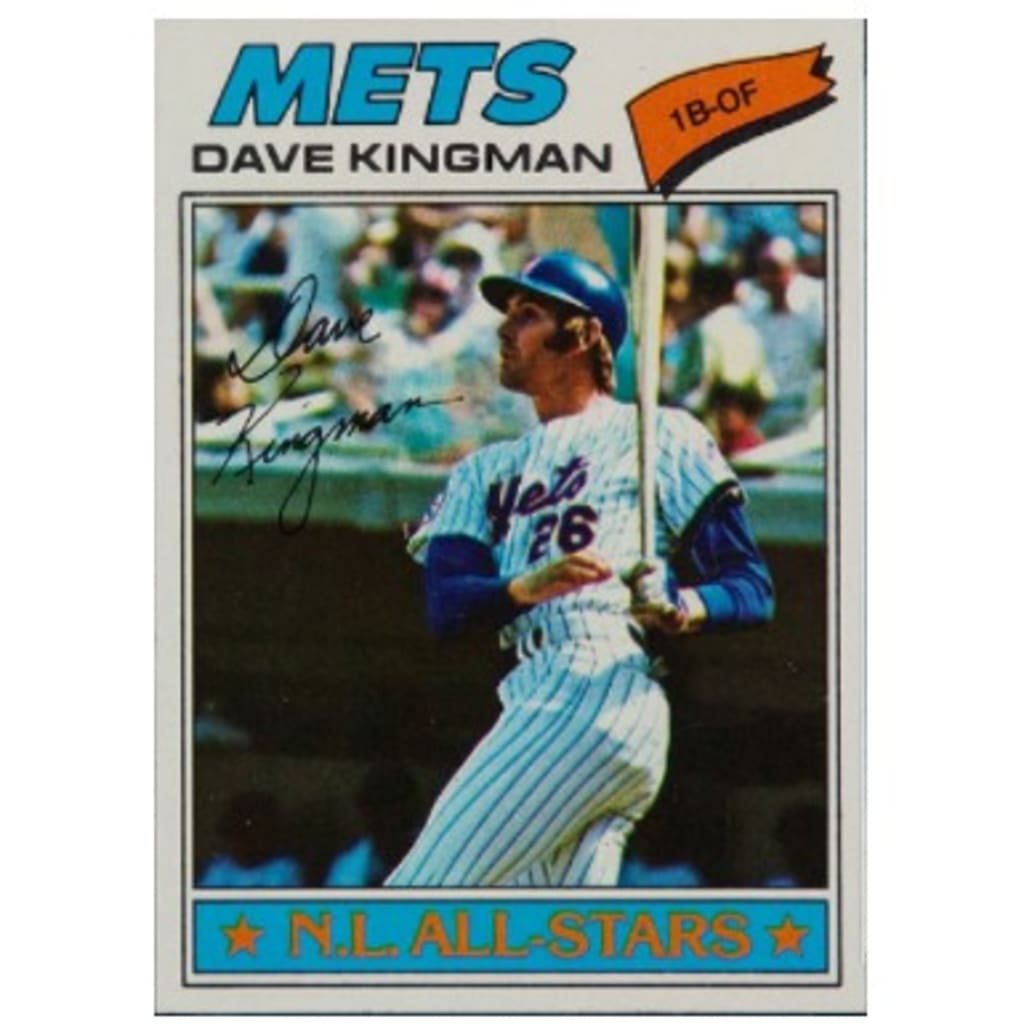
Dave Kingman, 1977 Topps
The Mets finished in third place in each of Kingman’s first two seasons during his first stint with the team, part of a stretch of 12 straight years without a postseason appearance, but Kingman’s swing-for-the-fences approach at least kept things interesting, as Mitch Green pointed out when he submitted this card in our survey.
“The mid-70s Mets weren't always fun to watch, but as a young teen, every time Big Dave came up, there was hope you would see something incredible,” Green wrote. “This action card demonstrates the torque Dave put into every swing!”
This set was released the year after Kingman earned his first career All-Star selection. The 1977 campaign proved to be an eventful one for the slugger, who was traded twice and waived once, playing for four teams altogether (Mets, Padres, Angels, Yankees).
Kingman returned to the Mets in 1981 after he was traded to New York by the Cubs. Kingman led the NL in homers (37) in 1982, but he also had an MLB-high 156 strikeouts and hit .204. -- Thomas Harrigan
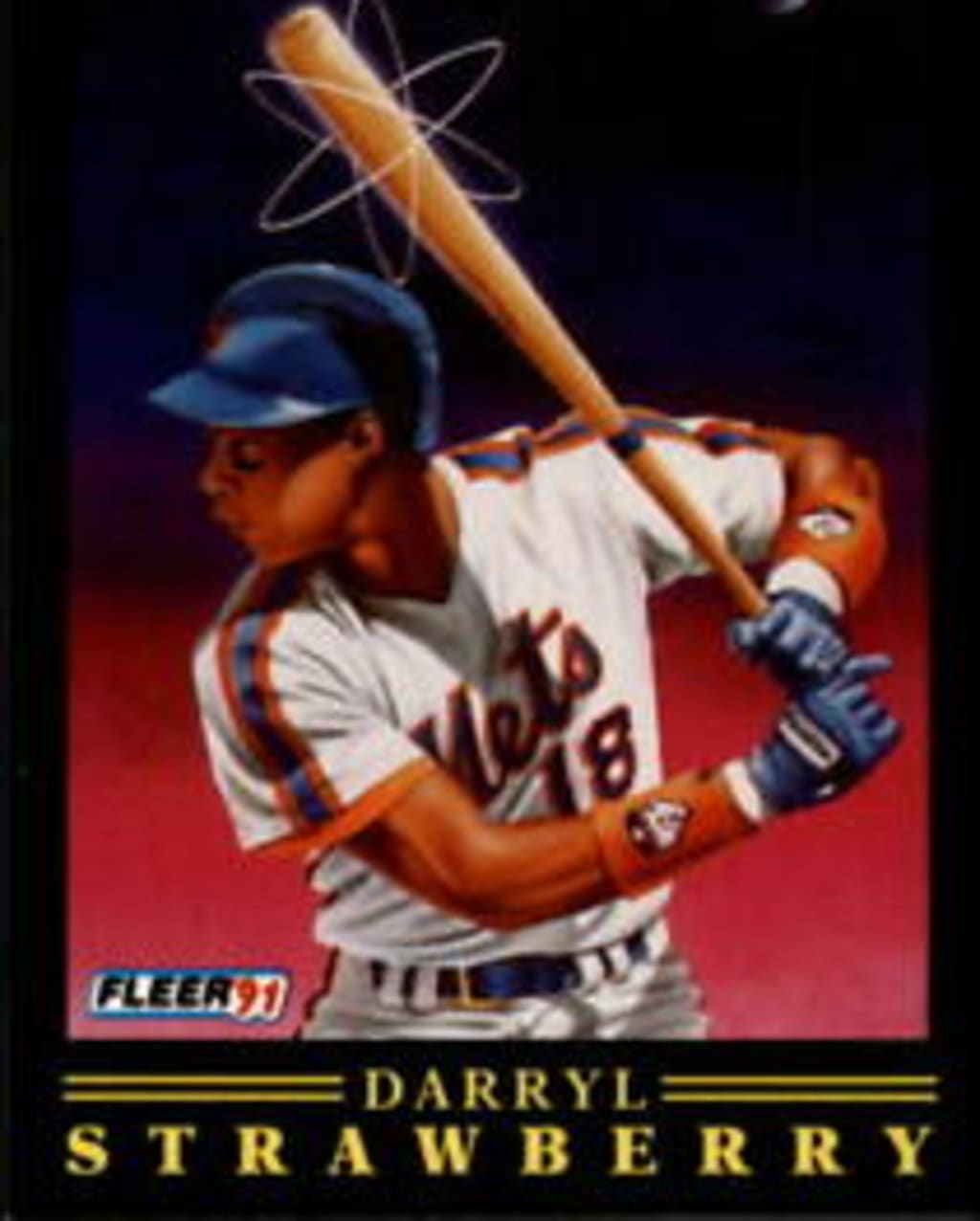
Darryl Strawberry, 1991 Fleer Pro-Vision
This set was so cool. The Donruss Diamond Kings cards are some of the most beautiful artistic items you can find in the world of baseball memorabilia, but so are the '91 Fleer cards with artwork like this on them.
This beauty is of Strawberry wielding a bat with a symbol of nuclear material around the barrel, one of the creative themes that all of these cards featured.
"My brother and I loved collecting these cards because they are absolutely beautiful works of art with a cool connection to the players," wrote Clayton B. of Chicago, who submitted this card in our survey. "This Strawberry card is named 'Nuclear Powered' on the back. Strawberry is my favorite player ever and I was lucky enough to meet him when my company hosted him as a guest speaker. He's a supremely nice man and very humble!"
With the lightning quickness of his bat, the nuclear power symbol is apt for Strawberry's card, and a unique way to capture his ability at the plate. -- Manny Randhawa
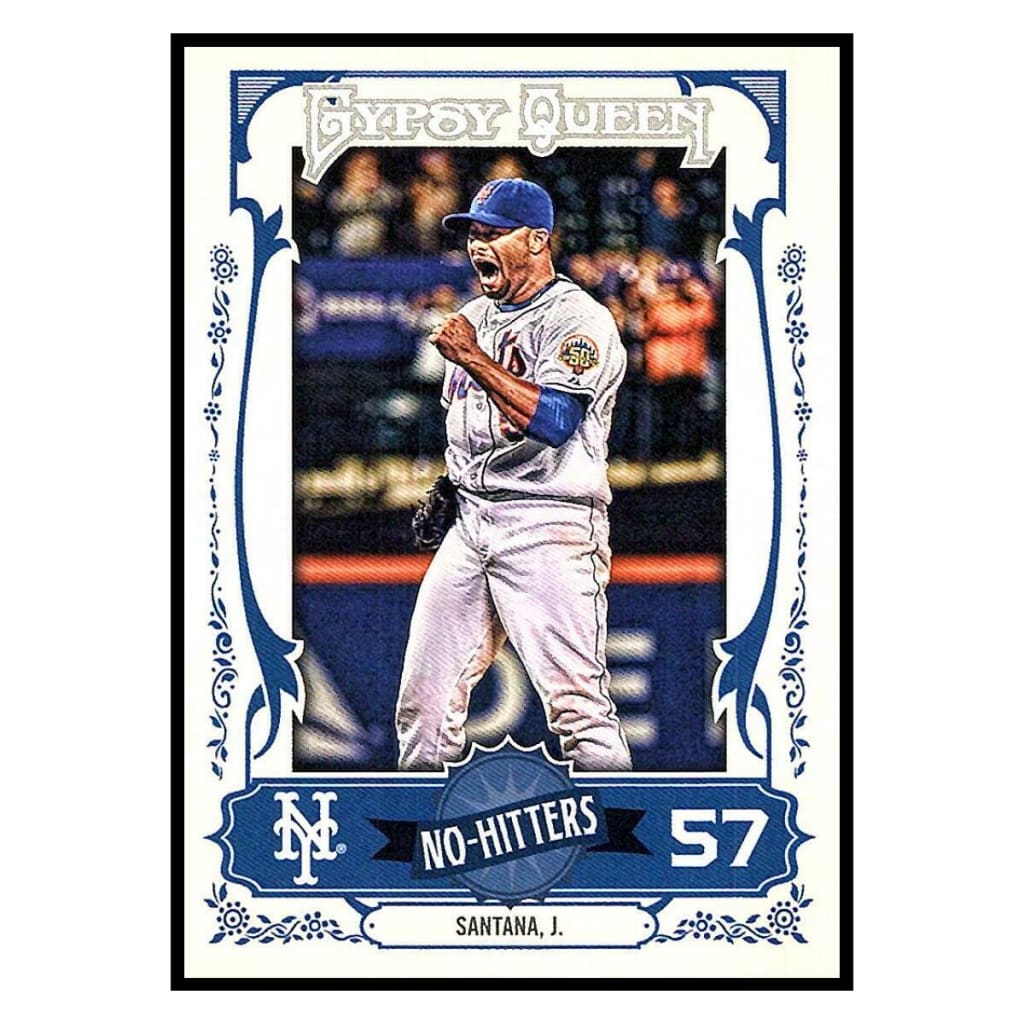
Johan Santana, 2013 Topps Gypsy Queen
This card is for one of the great individual achievements in Mets history: Johan's no-hitter on June 1, 2012.
The left-hander, already a fan favorite for his dominant first few years in New York, cemented his status as a Mets great by becoming the first pitcher in the 50-year history of the franchise to throw a no-hitter.
On this Gypsy Queen card, Santana pumps his fist and screams in triumph as he completes the feat at Citi Field.
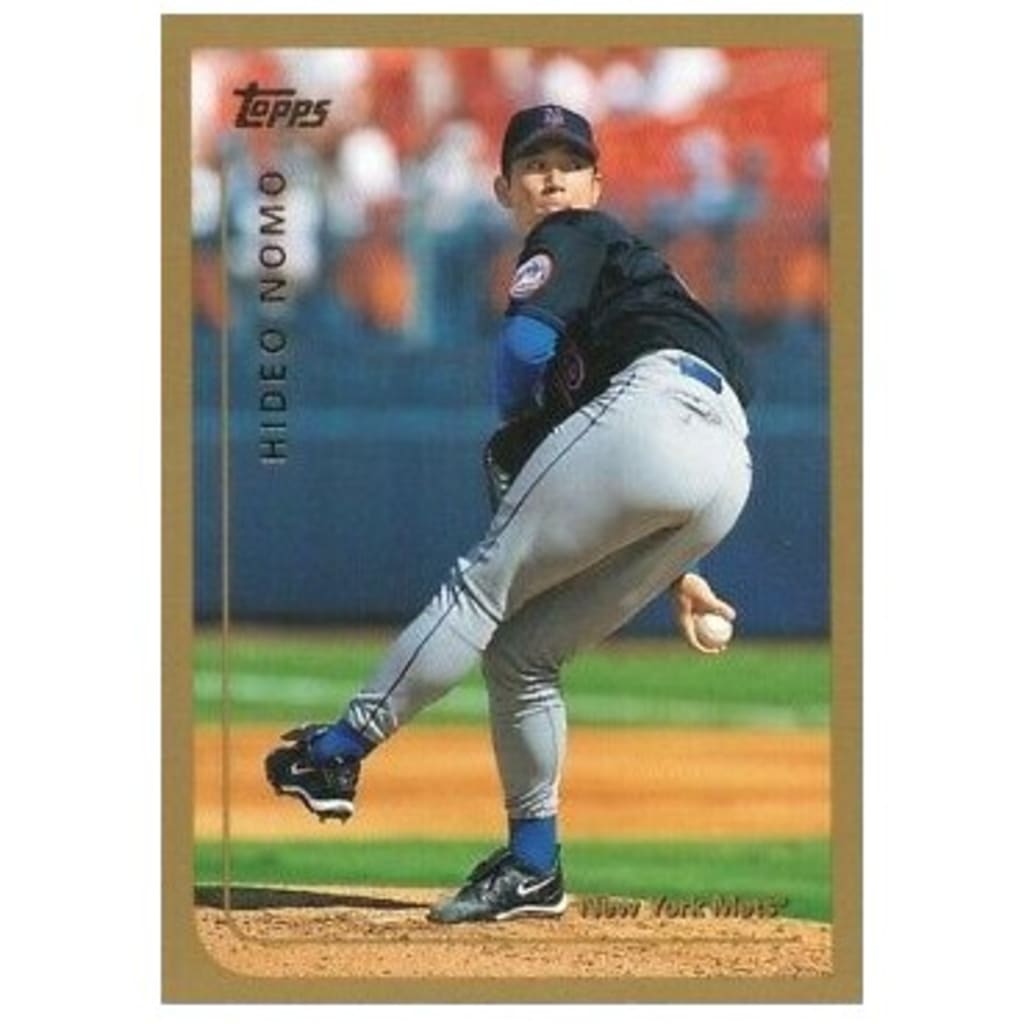
Hideo Nomo, 1999 Topps
Nomomania burst onto the scene in ’95, when the right-hander came over from Japan and took baseball by storm as a member of the Dodgers, posting a 2.54 ERA with 236 strikeouts over 28 starts, including three shutouts. Nomo struck out more than 230 batters in both ’96 and ’97 as well. He also threw the only no-hitter in Coors Field history on Sept. 17, 1996, against the Rockies.
However, Nomo struggled in ’98, and his Dodgers tenure came to an end when he was traded to the Mets with Brad Klontz for Dave Mlicki and Greg McMichael on June 4. Nomo made 17 appearances (16 starts) for New York and posted a 4.82 ERA.
The Mets released Nomo the following March, but his Topps ’99 card depicts him as a Met (and in a black jersey, which is sure to be a crowd pleaser). -- Thomas Harrigan
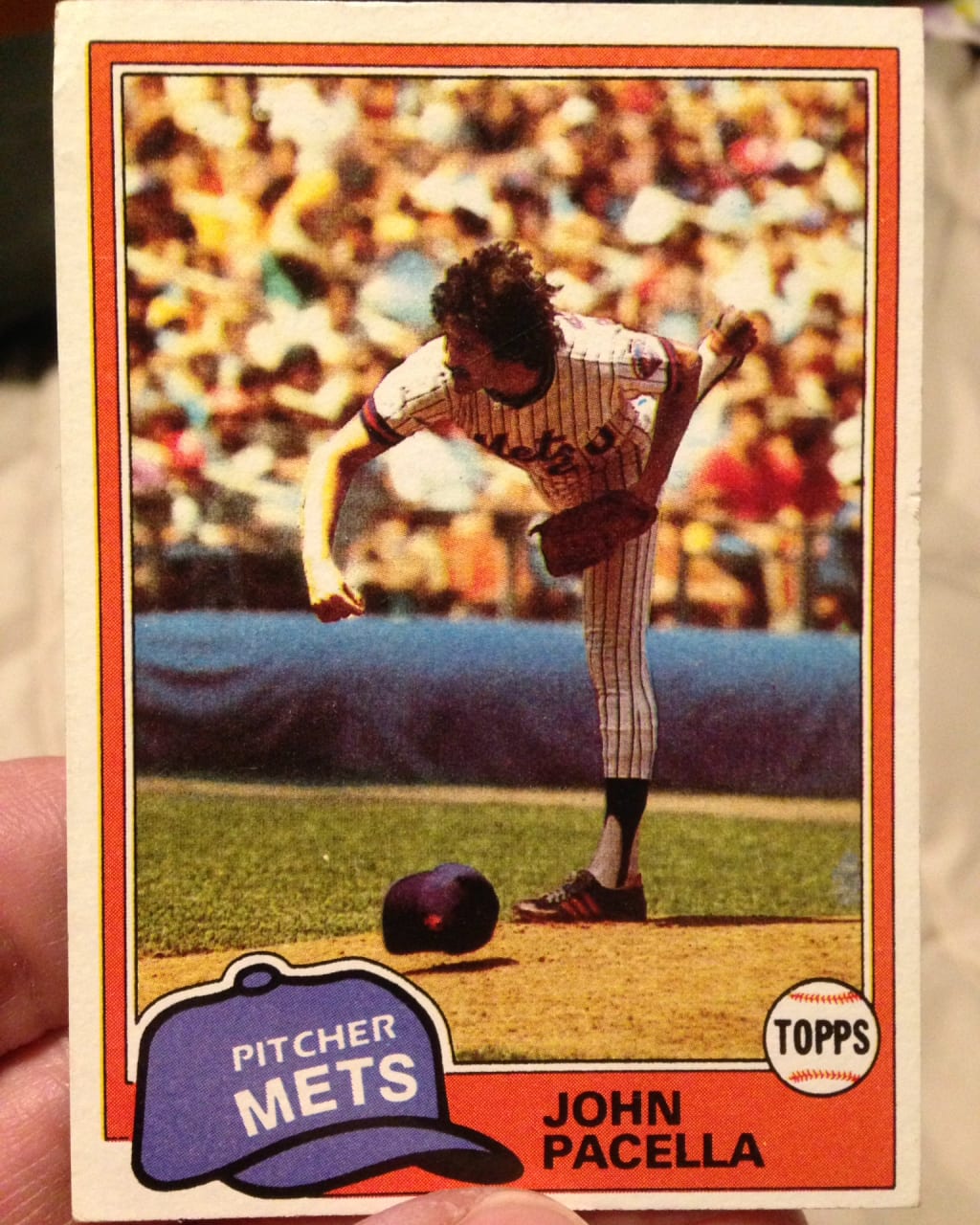
John Pacella, 1981 Topps
This is great -- a favorite card, in part, because the person who submitted it has a relative that got annoyed by the player on it.
“My favorite card is a John Pacella card that shows Pacella's cap falling to the ground as he completes a pitch,” wrote Kevin M. of Summit Hill, Penn. “I owe my love of baseball to my Pop-Pop, who was known as THE 'Mr. Baseball' of his hometown and time.
“I watched many games with my Pop-Pop when I was a youngster in the 1970s and ’80s, and I will never forget how enraged he became when he would see Pacella's cap fall off his head every single time he would deliver a pitch!”
We’ve seen many players whose headwear would fall off while making a great catch or stretching a double into a triple on the bases. But on the mound? Pacella was unique in that regard. -- Manny Randhawa
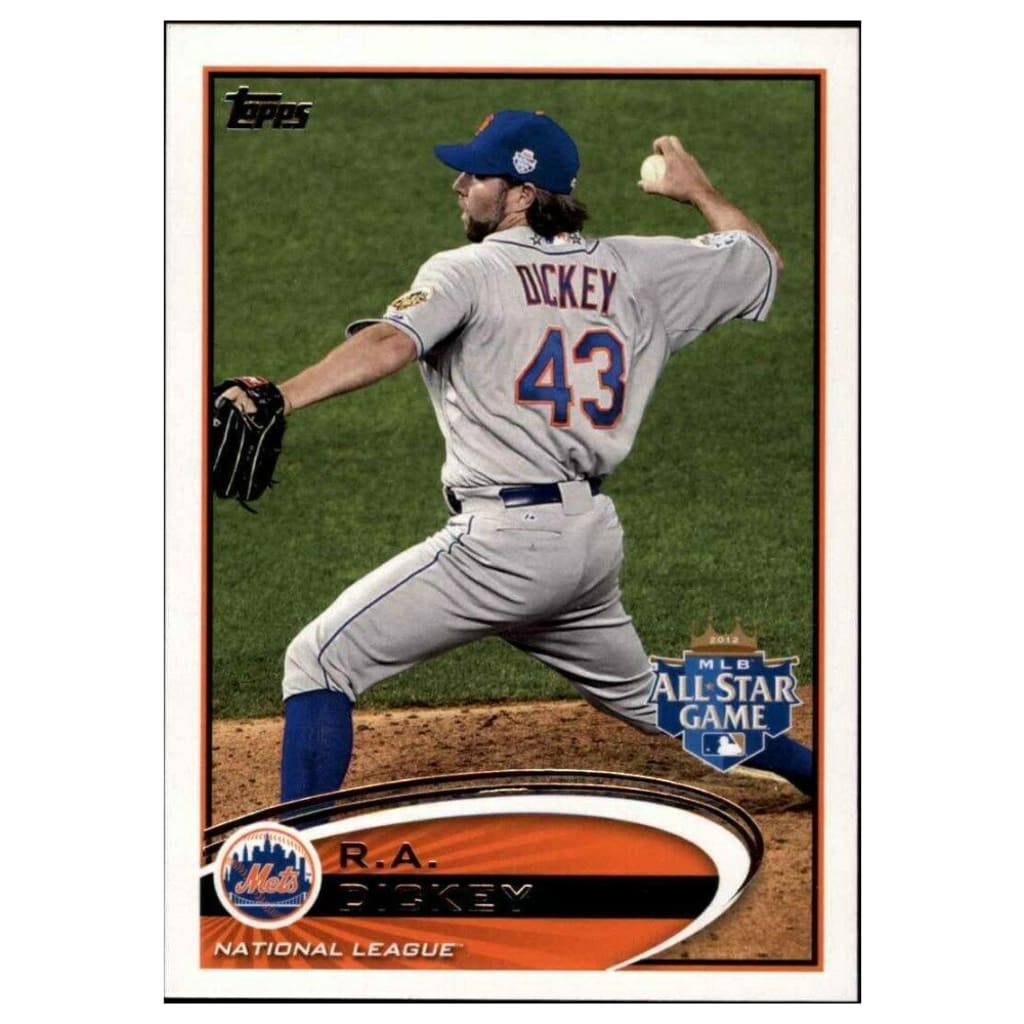
R.A. Dickey, 2012 Topps Update
It's hard not to like this card of Dickey, because you can see his knuckleball grip so clearly in the photo.
At age 37, the Mets right-hander was an All-Star for the first time in his career in 2012, and he threw a scoreless inning in the National League's victory in the Midsummer Classic.
But that was far from the highlight of Dickey's season. The knuckleballer won the NL Cy Young Award after going 20-6 with a 2.73 ERA and a league-leading 230 strikeouts in 233 2/3 innings.
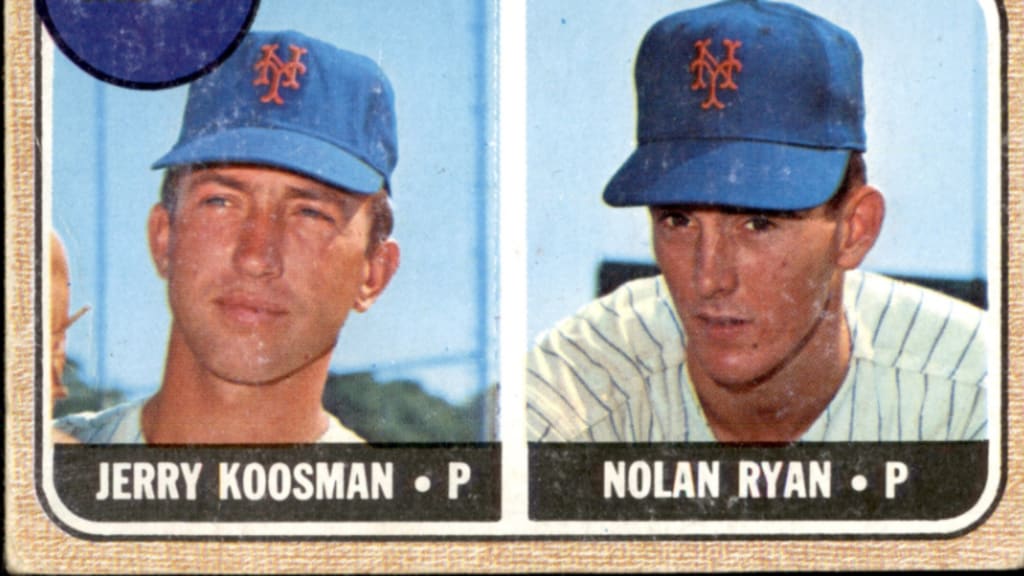
Nolan Ryan/Jerry Koosman, 1968 Topps
We don’t often think of Nolan Ryan as a rookie. He pitched at the Major League level in parts of four decades, setting records that remain standing for career strikeouts (5,714) and no-hitters (seven).
But even the Ryan Express began as a rookie. And that’s where this card comes in -- look at that baby face. Next to the future Hall of Famer is Jerry Koosman, a great pitcher in his own right. The left-hander was a two-time All-Star and along with Ryan helped the “Miracle Mets” win it all in 1969. Koosman yielded just four runs over 17 2/3 innings during the Fall Classic against the Orioles, with the Mets winning both of his starts.
Andy R. of Owasso, Okla., was one of several who submitted this card in our survey, and he has a great story behind it.
“Growing up in Tulsa, our Double-A team, the Drillers, was affiliated with the Texas Rangers,” Andy wrote. “When I was 8 years old, my dad took me to the baseball card store for the first time, and he bought me a 1990 Score Nolan Ryan card, and thus began my collecting of Nolan Ryan cards.
“I loved watching Nolan Ryan pitch and admired his long career. As I got older, I could afford some of his older cards ... but the dream card was his rookie, the 1968 Topps Nolan Ryan/Jerry Koosman card. At various times, this card could cost as much as $1,600 at card shows. One day I hoped to own one of my own. When my wife and I had our first baby, she wanted my first Father’s Day to be special and asked me what a special gift would be. I thought about it and said the perfect day would be time spent together as a family and taking our son to the same hometown baseball card shop in Owasso, and buying a Nolan Ryan rookie card, and that’s what we did!”
Baseball. Family. Memories. It doesn’t get much better than that.
-- Manny Randhawa

